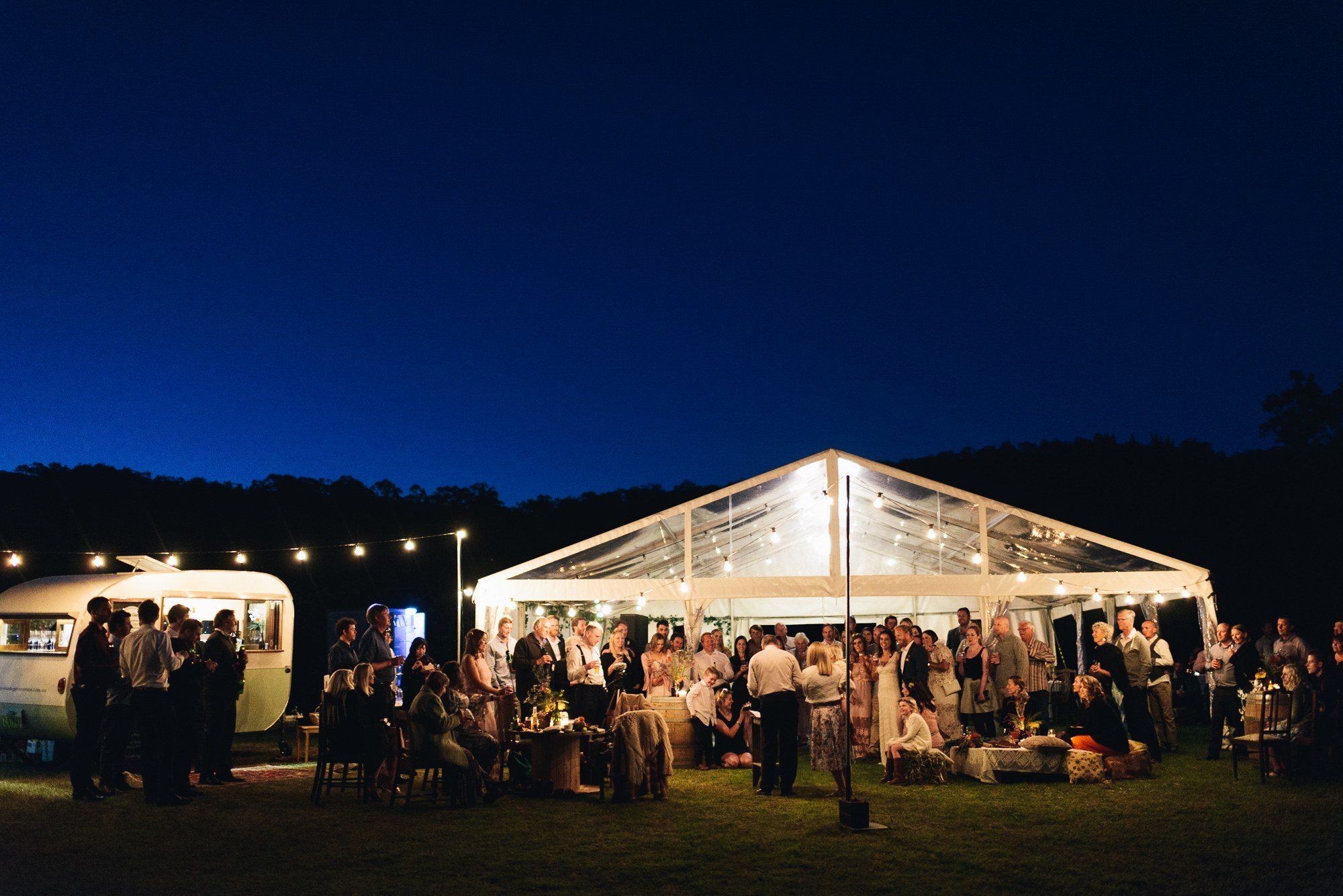Al fresco wedding, starry soiree, open-air nuptials: whatever you call it, an outdoor wedding is always a magical experience.
If you’re dreaming of clinking glasses under a night sky surrounded by nature, then you’ve got our vote. However, some careful planning is crucial to ensure everything goes off without a hitch (except yours).
In this guide, we’ll walk you through the essential considerations for hosting an outdoor wedding, from weather contingency plans to thoughtful details like lighting and insect management.
What time of year is best for an outdoor wedding?
This is highly variable, depending on where you’re getting married but there’s generally a sweet spot. Obviously spring and autumn host the more mild temperatures, while summer extends the daylight for those perfect evening vibes. And then, winter has its charm with a blazing fire pit. There are pros and cons to all wedding seasons so pick the season that you both enjoy the most and that suits for the location.
This about the kind of atmosphere you’re wanting to create and what the historical weather reports show for the region you’re planning on getting married at. And know there are always ways to manage extreme heat and also handle rainy weather on your wedding day.
What is the best time of day for an outdoor wedding?
The most popular time to host an al fresco wedding ceremony sits in that 3-5pm slot if you’re vibing with a romantic, under-the-stars kind of affair for the reception. This allows some daylight for the ‘I do’s’ and then a smooth transition into an evening party.
Keep an eye on when the sun plans to clock out for the day and plan your ceremony for that perfect natural light – Timeanddate.com has a handy sunset calculator for this purpose. Whether you’re soaking up the afternoon sun or dancing under the moonlight, getting the timing right amps up the enchantment of your outdoor celebration.
Our top 10 tips to plan an open-air wedding
1. A wet weather back-up plan is essential
Let’s kick off with the first and most obvious: you’re at the mercy of Mother Nature. While the allure of an outdoor wedding is undeniable, you’ve got to have a Plan B that you’re happy with. This might involve hiring a marquee (you can put down a deposit to have on on stand-by) or hosting the wedding at a venue that has a permanent weather-proof structure for a back-up option.
2. Think of guest comfort
This is paramount for an outdoor celebration. Ensure you’ve got ample market umbrellas set up for shade on sunny days (or you’re near large shady trees until the sun sets). Cozy blankets can also be a thoughtful touch, especially for evening ceremonies when temperatures may drop.
3. Proximity to amenities and accessibility
Choose a location that’s not too remote or set up too far away from essential amenities. If restrooms are not readily available, make sure you rent enough portable bathrooms. Additionally, think about the accessibility of the venue for all guests, especially those with mobility challenges, and ensure there’s a smooth drop-off point.
4. Consider Less Able-Bodied Guests and Terrain:
For the comfort of all guests, make sure the wedding venue’s terrain is not too rough. Ensure there’s an easy drop-off point for guests with mobility challenges. This consideration is crucial to make the celebration inclusive and enjoyable for everyone.
5. Ideal for Small to Medium-Sized Weddings:
While the allure of an open-air wedding is universal, logistically and catering-wise, it is often better suited for smaller to medium-sized gatherings. This ensures a seamless event, and catering becomes more manageable, especially when temporary facilities are required.
6. Food Considerations for Temporary Set-Up:
If there’s no permanent kitchen nearby, opt for shared banquet-style meals over individually plated courses. Caterers can work wonders in unconventional settings, but simplicity in serving style can enhance the overall experience.
7. Consider Nighttime Lighting:
Creating the right ambiance for your outdoor wedding extends into the evening. Plan for suitable lighting that not only adds to the atmosphere but also ensures the safety of your guests. String lights, lanterns, and well-placed candles can contribute to a magical setting.
8. Insect Management:
The charm of an outdoor wedding can quickly fade if mosquitoes and other insects decide to join the festivities. Be prepared with mosquito spray, strategically placed bug zappers, and consider using strong decoy lights placed away from the celebration area to attract unwanted visitors.
9. Power Requirements and Generator:
Ensure your outdoor venue is equipped with a generator capable of meeting all power requirements. This includes lighting, catering needs, and any entertainment you have planned. A reliable power source is key to a smooth and uninterrupted celebration.
10. Mowing for Easy Access:
If your wedding is set in a field or grassy area, consider mowing a path for easy access. Do this a day before the event to allow bugs to relocate and ensure your guests can navigate the venue comfortably.
Ready to make an outdoor wedding come to life? Start searching wedding venues here.
Featured image of Wedshed venue BoxGrove Bathurst.
Looking for more ideas?
We’ve brought together advice, articles, and inspiration on our Advice & Ideas blog to help you find your feet.








